Fri., Apr. 21, 2006
We've made some real progress with the 1S1P report grading. Some
of the graded papers were returned in class. While waiting for
the remaining reports you can check this link
to see if you have made it to 45 pts.

The Fujita Scale is used to rate tornado strength, severity, or
intensity. We will come back to the Fujita Scale and look at the
levels of damage tornadoes of different strengths
can cause. It is very difficult to measure tornado winds
directly. Often the only estimate of a tornadoes' strength comes
from a survey of the damage it left behind.
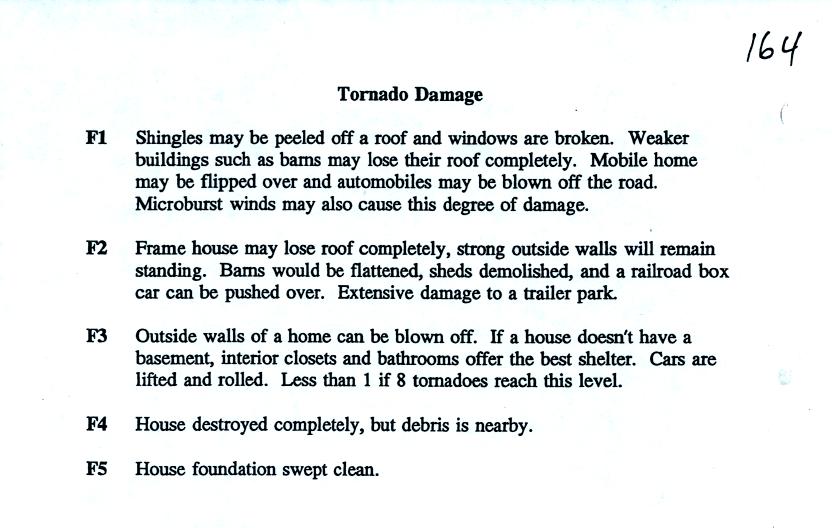
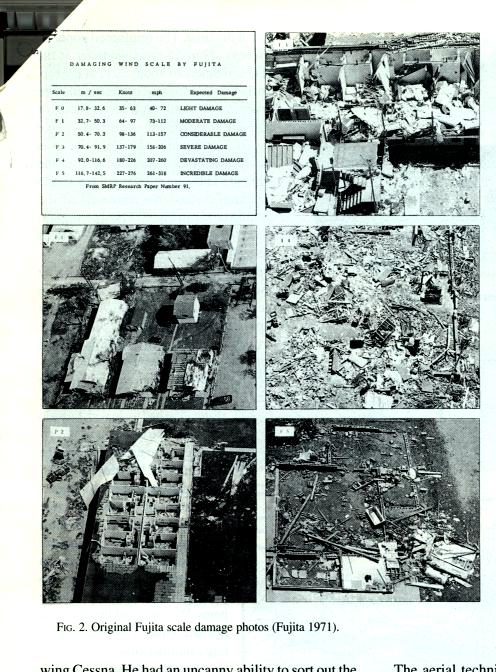
Some photographs of damage produced by tornadoes of
different
strengths. (figures like these were shown in class)
middle left: F1 (roof damage)
bottom left: F2 (roof is gone, walls are still standing)
top right: F3 (exterior walls are down, interior walls still standing)
middle right: F4 (complete destruction, debris is nearby)
bottom right: F5 (complete destruction, most of the debris has been
carried away)
(source: T. Theodore Fujita: His Contribution to Tornado Knowledge
through Damage Documentation and the Fujita Scale, Bull. Amer. Meterological Soc., vol. 82,
pps 63-72, 2001.)
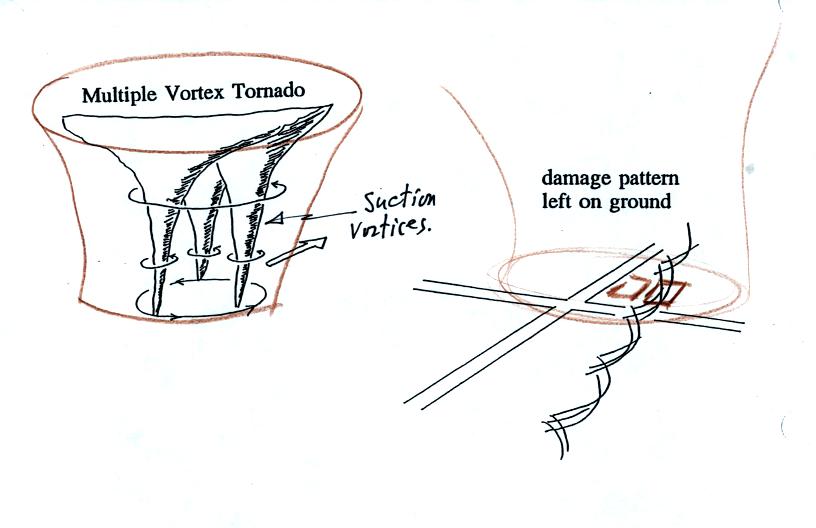
Some large and strong tornadoes may contain several smaller
and more
intense suction vortices. They are sometimes hard to see because
of all the dust and debris in the main tornado cloud. The suction
vortices do leave unusual markings on the ground. These smaller
vortices that rotate around the center of the larger tornado also
explain how one house can be severely damaged or even destroyed by a
tornado while a house next door only has light damage.
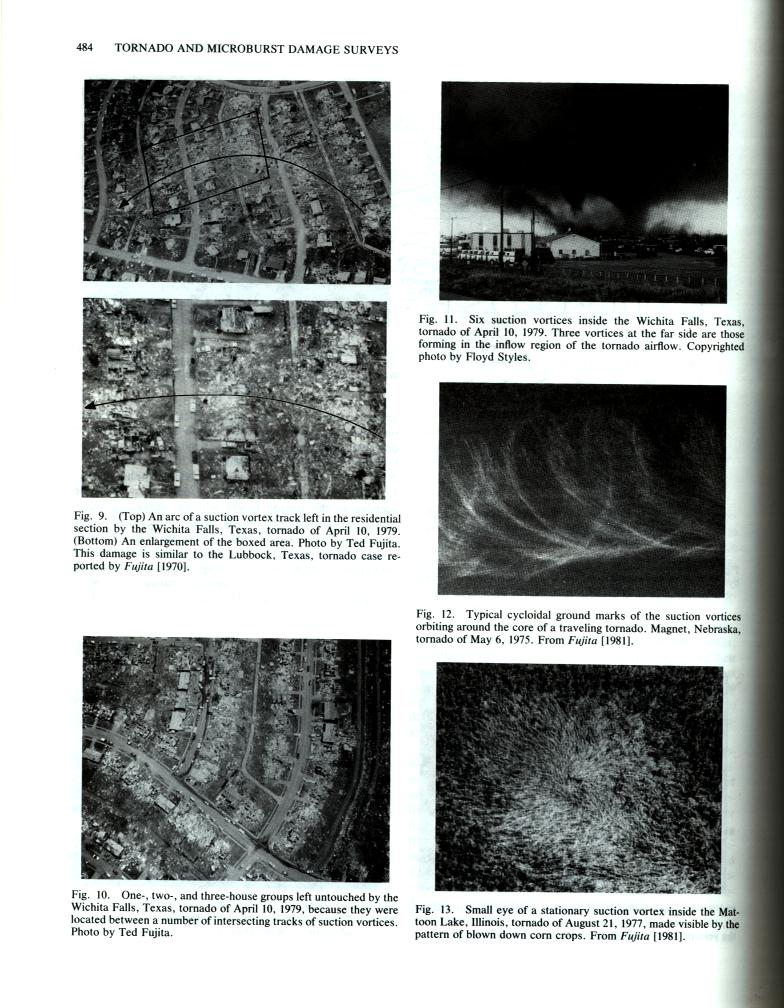
Aerial photographs of tornado damage produced by multiple
vortex
tornadoes (this figure wasn't
shown in class). (source: The Tornado: Its Structure,
Dynamics,
Prediction, and Hazards, Geophysical Monograph 79, American Geophysical
Union, 1993)
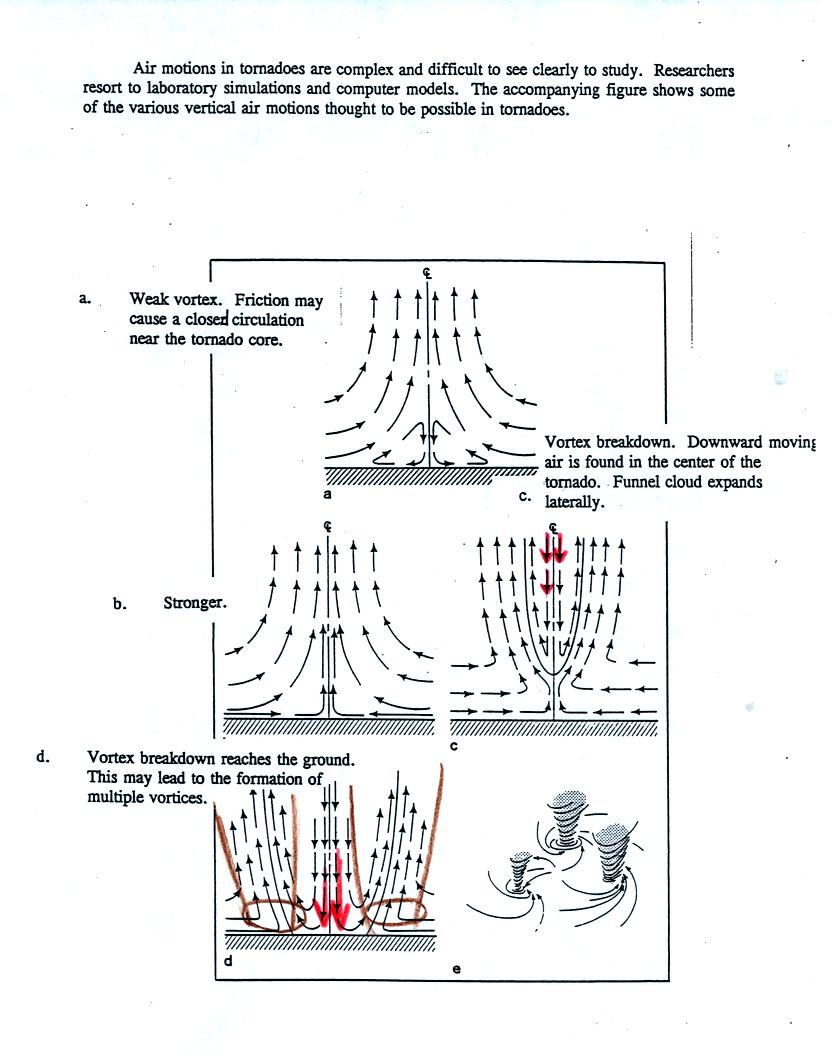
Air motions thought to be possible inside tornadoes
determined using
laboratory simulations and computer models of tornadoes. Sinking
air motions are thought to exist in large strong tornadoes (there have
been reports of people being able to look inside a tornado and see a
hollow core), suction vortices may then form in the cylinder of rising
air surrounding the core of the tornado.
Now we
move onto the last topic that we will cover from Chapter 10 - Lightning
Here's a link to the short story
that was read in class (that had something to do with lightning)
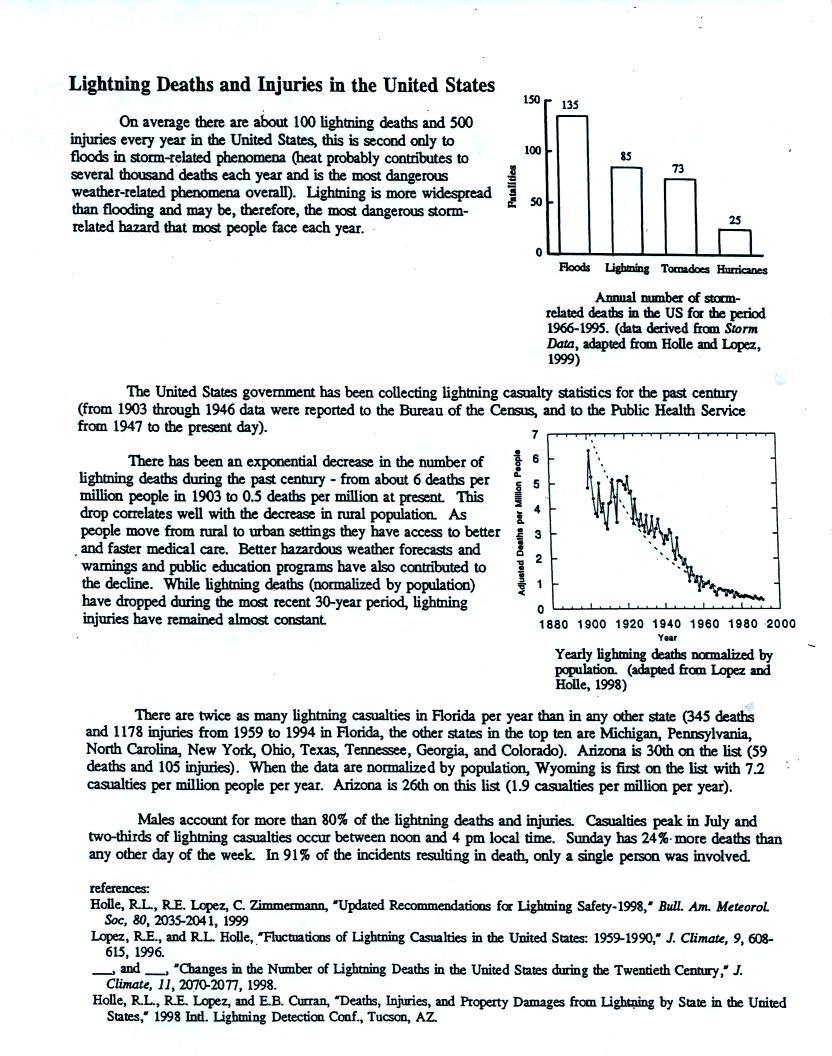
Lightning kills more people in an average year than tornadoes or
hurricanes.
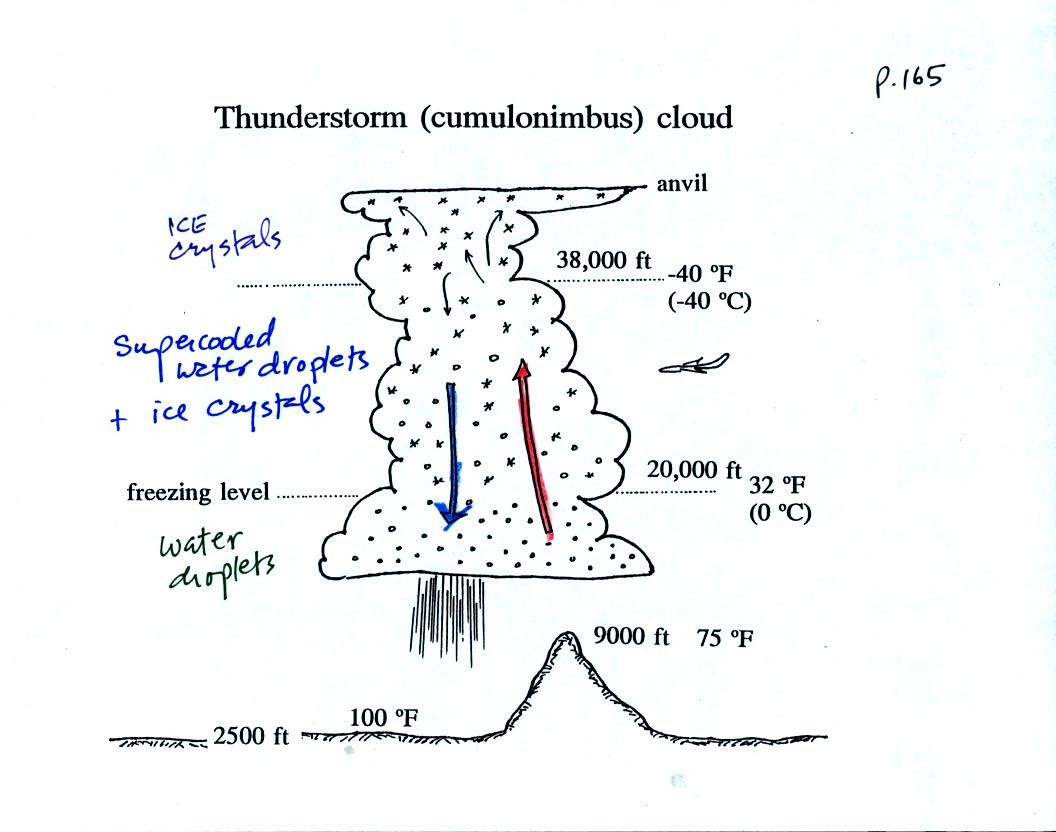
This is review. Thunderstorms easily climb above 20,000
feet altitude, so even on the hottest day in Tucson, these clouds will
contain ice crystals. The mixture of supercooled water droplets
and ice crystals in the middles of clouds was important in the ice
crystal process of precipitation formation. It is also important
in generating the electrical charge needed for lightning.
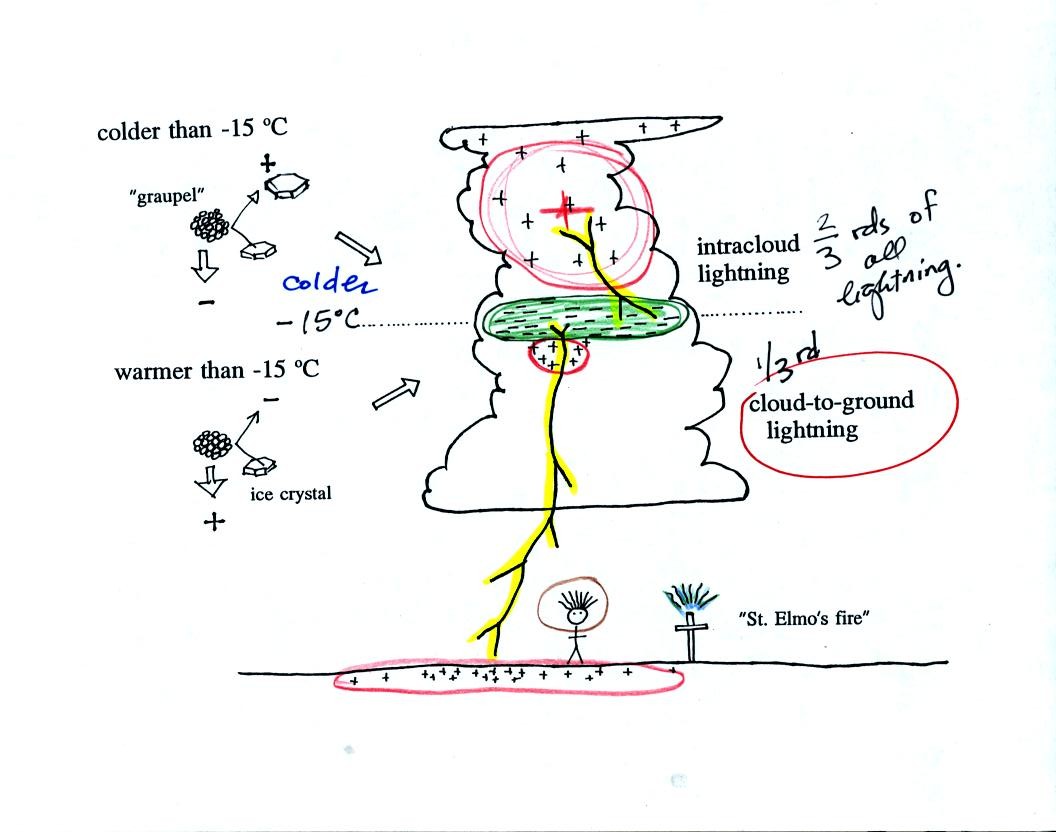
Collisions between precipitation particles produce electrical
charge. When graupel and ice crystals collide at temperatures
colder than -15 C the ice crystal is positively charged and is carried
toward the top of the cloud by the updraft. The graupel ends up
with a negative charge and creates a layer of negative charge in the
middle of the cloud. At temperatures warmer than -15 C (but still
below freezing) the polarity of the charging is reversed. Small
pockets of positive charge are found below the main layer of negative
charge. Note also the positive charge that accumulates in the
ground under the thunderstorm. The electrical attraction between
objects on the ground can create some interesting phenomena. We
saw a slide of a woman standing on a mountain ridge under a
thundestorm. Her hair was standing on end. A faint blue
green glowing discharge is sometimes visible on the tops of tall
objects under a thunderstorm. This is known as St. Elmo's Fire.
Intracloud lightning discharges between the main positive and negative
charged regions in the cloud is the most common type of
lightning. We are more concerned with and know more about cloud
to ground lightning because that is what kills people and causes
billions of dollars of damage to structures on the ground.
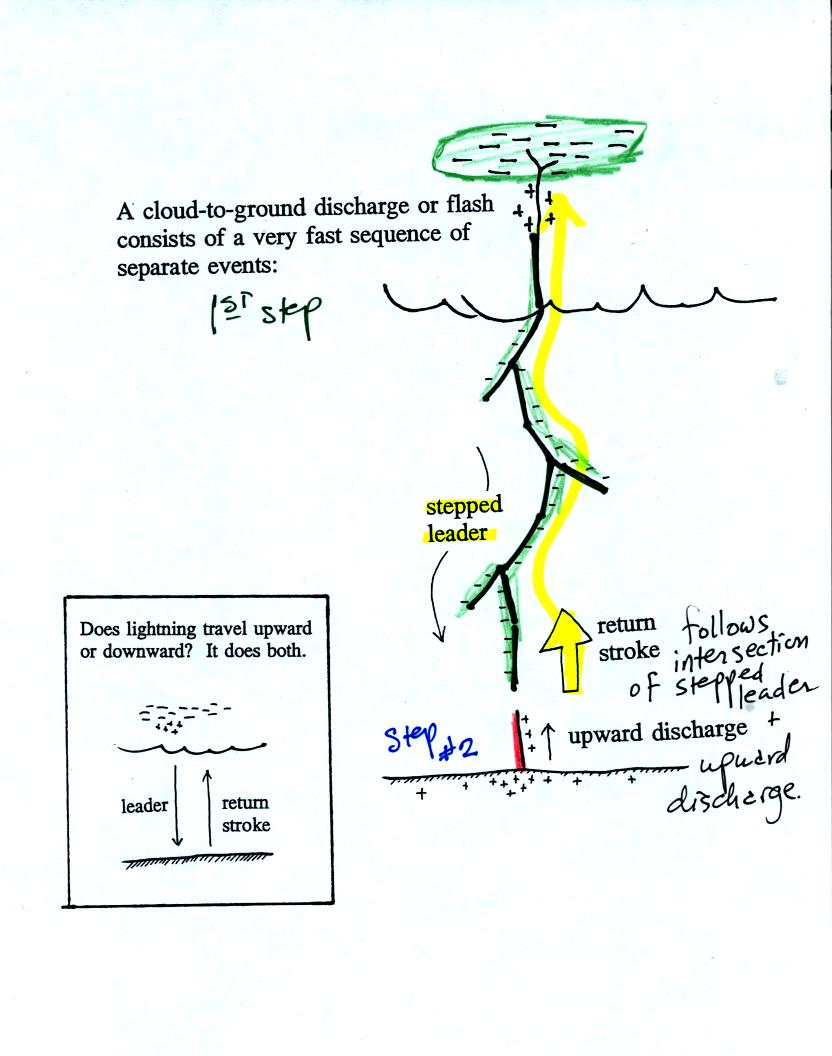
Cloud to ground lightning normally begins with a downward moving
negatively charged stepped leader. It takes a 50 yard long jump
every 50 microseconds or so. It emits a short pulse of light
everytime it takes a jump. When the stepped leader nears the
ground a positively charged upward connecting discharge progagates
upward to meet the stepped leader. When they connect, the cloud
and ground are effectively short circuited and a very powerful spark,
the return stroke travels back up the channel to the cloud.
We'll finish lightning in class on Monday.









